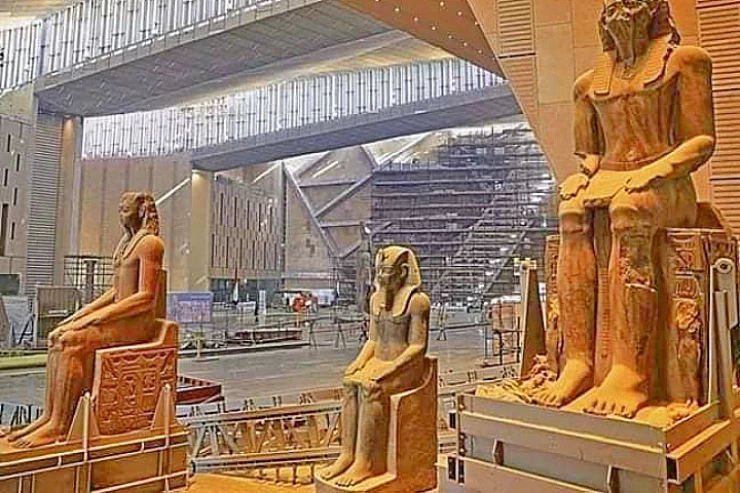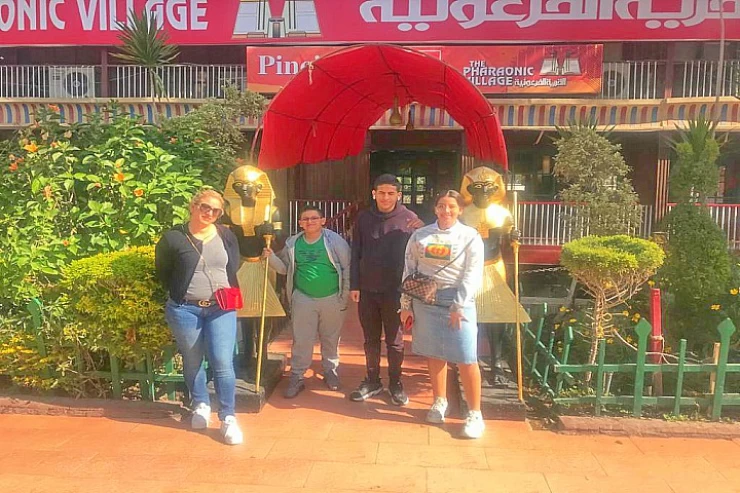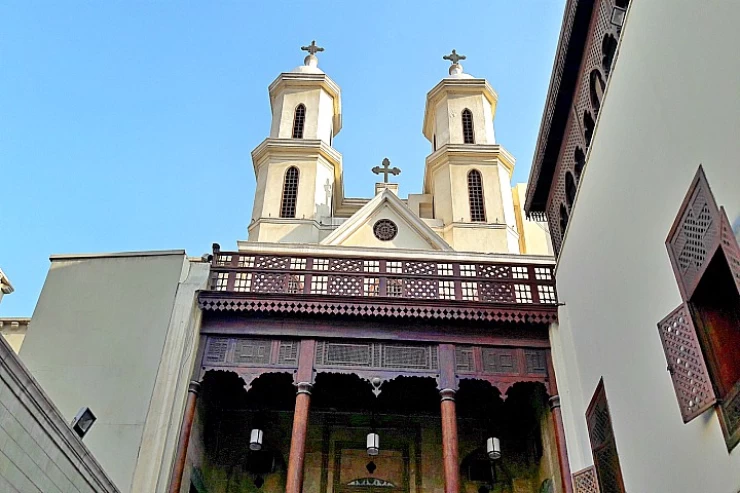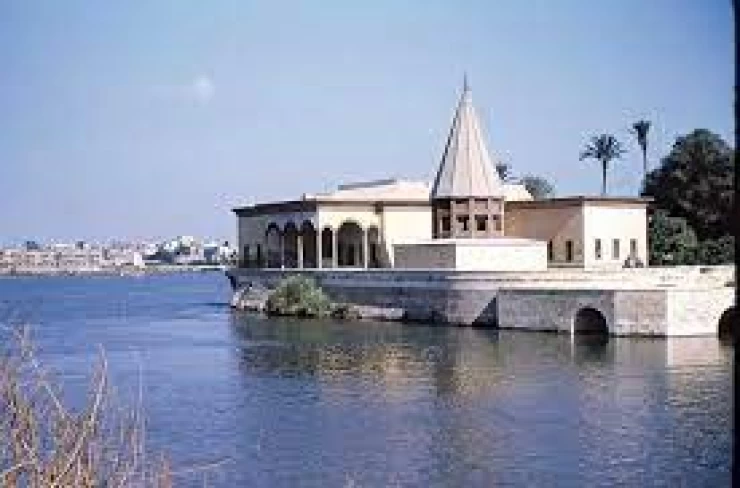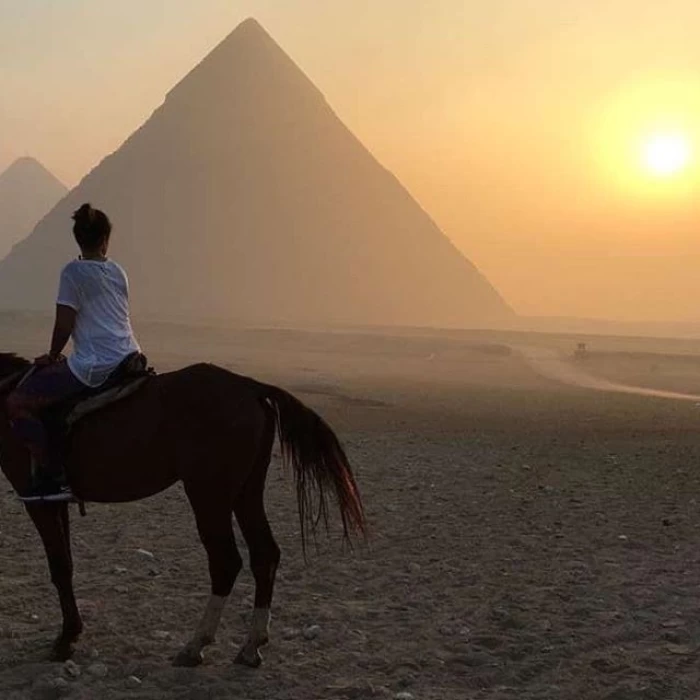
埃及历史|埃及历史年表
埃及历史的丰富挂毯: 千年之旅
从法老身上可以感知到的古代历史一定是有史以来最伟大的历史文明之一。它的时间线长达五千多年,世界的许多方面,如艺术、建筑、文化甚至宗教,都以埃及为基地。埃及土地上的记录非常有趣,其中包含了帝国建立和灭亡的历史、伟大国王和王后的历史,以及即使在现代社会的今天也只能叹为观止的杰出场所和建筑。从金字塔的建造到尼罗河的水流,埃及的历史无疑是以生动的叙事为主线,描绘了人民的奋斗、希望和智慧。
古埃及王国(约公元前 3100 年至公元前 332 年)
1. 前王朝时期(公元前 3100 年之前)
关于埃及的历史记载大约在公元前 3100 年左右,但如果从历史的重要性来看,它甚至可以追溯到前王朝时期,当时尼罗河沿岸出现了小型农业定居点。此时,埃及的早期居民已经开始从事农业、畜牧业、陶器制作和简陋工具的制作。这些定居点为日后复杂的文化和社会体系奠定了基础。
2. 统一和早期王朝时期(约公元前 3100-2686 年)
纳美尔王(常被称为梅内斯)负责统一上埃及和下埃及,这标志着古埃及文明的开始。他被认为是埃及的第一位法老,并建立了埃及的第一个王朝。这一统一行动至关重要,因为它创造了埃及中央集权君主制的核心,而这种君主制是埃及近三千年来的主流政体。
早王朝末期,人们开始建造纪念性建筑,并掌握了象形文字。正是在这一时期,统治者被期望扮演国王和神的角色。这种思想存在了很多年,是埃及的基本思想。
神圣的统治者,也就是尘世中的法老,驯服了一切资源和人力,建造了巨大的建筑,如胡夫大金字塔和狮身人面像。
旧王国时期的行政等级清晰而一致,甚至有一个大规模的机构支持系统,控制着国家的资源、农业生产和神庙。然而,在这一时期的后期,中央政权的主导地位开始减弱,迎来了一个混乱和分裂的时代。
4. 中王国(约公元前 2055-1650 年)
在经历了上述动荡的第一中间期之后,埃及在中王国时期恢复了政治稳定和强大的统治者。这一时期在艺术、文学和纪念性建筑工程领域出现了复兴。曼图霍特普 11 世和塞努斯雷特 111 世等法老负责将埃及的疆域向南扩展到努比亚,并通过贸易促进与其他国家的关系。
中王国通常被视为古埃及的古典时期,充满了相对的平静和富裕。当局重视埃及的建设发展和经济增长。尽管取得了这些成就,但内部的冲突和外部的挑战最终导致了中王国的解体,为另一个黑暗和绝望的时期让路。
5. 新王国(约公元前 1550-1070 年)
从时间上看,新王国也是古埃及文明的顶峰时代。正是在这一时期,在图特摩斯三世、哈图苏和拉美西斯二世等统治者的统治下,埃及变成了一个成熟的帝国,他们通过战争和征服,或者说通过政治策略,扩大了埃及的疆域。在此期间,他还增建了许多伟大的神庙,如卡纳克神庙、卢克索神庙和阿布辛拜勒神庙,其中许多至今仍然存在。
在新政权时期,宗教信仰也发生了显著的变化,如阿肯那顿统治时期,就出现了崇拜单一神灵--太阳神阿肯(Aten)的持续斗争时期。然而,他的统治并不受欢迎,而且统治时间很短,因为在他之后,又有一些领导人带回了埃及古老的崇拜方式,即不崇拜任何神,只崇拜许多神。
然而,除了权力,埃及也无法避免历史规律的影响。到新王国末期,这个国家机构已经摇摇欲坠,其活动也逐渐减少。
外族统治下的埃及(约公元前 332 年-公元 642 年)
1. 托勒密王朝(公元前 332 年至公元前 30 年)
公元前 332 年,亚历山大大帝开始统治埃及,在此之前的许多世纪里,埃及这个古老的国家一直自由繁荣。也正是在那个年代,亚历山大成为希腊文明和教育的中心,著名的李
伊斯兰埃及(公元 642 年-公元 1517 年)
公元 642 年,埃及领土落入伊斯兰军队之手。这标志着埃及伊斯兰时代的开始。随着法蒂玛王朝于公元 969 年创建的开罗逐渐崛起,埃及显然将成为伊斯兰世界最重要的国家之一。在征服了埃及的大部分土地后,埃及在学术、贸易和艺术方面迎来了巨大的繁荣。
1. 法蒂玛王朝、阿尤布王朝和马穆鲁克王朝
在统治埃及的法蒂玛王朝统治时期,埃及建都,并建立了著名的爱资哈尔大学。随着法蒂玛王朝的衰落,埃及曾一度被萨拉丁占领,萨拉丁是包括埃及在内的埃及领土的保护者,后来建立了阿尤布王朝,其主要任务是对抗十字军。
后来又出现了马穆鲁克王朝,他们是一个军事姓氏,统治埃及长达数个时代。在马穆鲁克时期,他们在城市中建造了许多最漂亮的建筑,包括清真寺、学校和防御工事。在被奥斯曼帝国征服之前,埃及至少在战败时是一个相当大的国家,有着先进的发展水平。
现代埃及(1517 年至今)
1. 奥斯曼帝国和英国的统治
1517 年奥斯曼帝国征服埃及后,埃及作为帝国的一部分被吞并了近四百年,并一直被束缚着。这主要是由于其地缘政治的可能性;它曾多次遭到欧洲列强的入侵,1798 年拿破仑-波拿巴曾设法短期入侵埃及。法国在这一地区失利后,埃及由穆罕默德-阿里-帕夏统治,他是现代埃及的指南针。他对农业、工业和军事进行了改革;这些改革是埃及现代国家的觉醒。
19 世纪末,埃及获得了英国的保护国地位,这种地位一直持续到 52 年,即埃及在贾迈勒-阿卜杜勒-纳赛尔领导的革命后恢复控制权的那一年。纳赛尔成为阿拉伯势力范围内最强大的人物之一,他宣传泛阿拉伯主义,并于 1956 年将苏伊士运河收归国有。
2. 20 世纪和 21 世纪的埃及
埃及近代史的演变受到了政治、社会和经济性质的多次变革的影响。尽管阿以冲突不断,但以贾迈勒-阿卜杜勒-纳赛尔总统为首的埃及在冷战中奉行不结盟的外交政策。随后,穆罕默德-安瓦尔-萨达特同样与以色列媾和,并于 1978 年签署了《戴维营协议》。萨达特 1981 年遇刺后的 10 年间,埃及经历了
2011 年,埃及经历了一场推翻穆巴拉克的革命,年轻一代随时准备接管国家,捍卫国家免受政治混乱的影响。目前,埃及的地缘政治地位并没有改变,因为它在该地区的政治舞台上扮演着重要角色,同时仍然保持着其一贯提供的服务,即基于丰富的历史遗迹和事件(从古老的金字塔到开罗城)的旅游业。
要了解埃及,就必须从政治、文化、宗教和发明开始,也就是历史学家所说的埃及历史--伟大的故事。它是史诗中的史诗。它是人类文明发展史上的决定性叙事,即使在今天,它仍处于各种事件的最前沿。从逝去已久的法老王国到繁荣昌盛的当代城市化,埃及是 “过去与未来交汇的地方”,既能容纳古老的历史脉络,也能满足现代人的渴望。
其中包括参观不同的埃及豪华游,让您住进最好的酒店,乘坐尼罗河游船。此外,如果您预算和时间紧张,还可以查看我们提供的大量埃及低价经济型旅游套餐。不过,如果发生意外导致身体受伤,那些已经预订了旅行团并希望探索这个美丽国家的游客就不必担心了,因为我们的运营商已经准备了一系列埃及无障碍轮椅旅行套餐。我们大多数人都熟悉这些旅游线路,因为它们包括两种或两种以上无障碍车辆类型和其他残疾人设施--这是我们经典埃及旅游线路的主要类别之一。
The ancient history that can be perceived from the Pharaohs has to be one of the greatest historical civilizations ever. Its events’ timeline is well over five thousand years, and many aspects of the world, such as art, architecture, culture, and even religion, have their bases in Egypt. The records of the land of Egypt are interesting in that they contain histories of empires that were built and then perished, histories of great kings and queens, and outstanding places and structures that even today, in modern societies, can only marvel at. Egypt’s history is undoubtedly dominated by a vibrant narrative of struggle, hope, and ingenuity of the people portrayed, from the making of the pyramids to the currents of the Nile.
The Ancient Kingdoms of Egypt (c. 3100 BC–332 BC)
1. Pre-Dynastic Period (Before 3100 BC)
The elements of history written of Egypt are dated around 3100 BC, but if one avails of its importance in terms of history, it dates back even to the pre-dynastic era, when there was the emergence of small agricultural settlements along the Nile. By this time, the early residents of Egypt were busy establishing forms of agriculture as well as animal husbandry, pottery making, and the making of crude tools. These settlements served as the foundation of the elaborate systems of culture and society that were to come.
2. The Unification and Early Dynastic Period (c. 3100–2686 BC)
King Narmer, often referred to as Menes was responsible for the unification of Upper and Lower Egypt, which signified the onset of ancient Egyptian civilization. He is considered to be the first pharaoh of Egypt and founded the nation’s first dynasty. This unifying act was essential since it created the nucleus around which the centralized monarchy of Egypt, which was the prevailing system of government for almost three thousand years, would revolve.
Towards the tail end of the Early Dynastic, the very first steps in the construction of monumental architecture began, and hieroglyphs were mastered. It was in this period that the rulers were expected to fulfill the role of the king and also that of a god. This idea existed for many years and was a fundamental one in Egypt.
3. The Old Kingdom (c. 2686–2181 BC)
The divine rulers, who were the Pharaohs in the earthly realm, tamed every resource and manpower to erect huge structures such as the Great Pyramid of Khufu and the Sphinx.
The Old Kingdom period displayed a clear and consistent administrative hierarchy and even a large-scale institutional support system that controlled the resources, agricultural production, and the temples of the state. However, in the latter years of this era, the dominant position of the central authority began to diminish, ushering in an era of chaos and fragmentation.
4. The Middle Kingdom (c. 2055–1650 BC)
Following the tumultuous First Intermediate Period referred to, Egypt returned to political stability and strong rulers in its Middle Kingdom. There is a revival in this period in the fields of art, literature, and monumental building works. Pharaohs such as Mentuhotep 11 and Senusret 111 were responsible for extending Egypt’s boundaries southward into Nubia as well as promoting relations with other countries through trade.
The Middle Kingdom is usually regarded as the classical period of ancient Egypt, filled with relative calm and wealth. The authorities emphasized the development of construction and the growth of the economy of Egypt. In spite of such achievements, the internal conflicts and external challenges finally caused the disintegration of the Middle Kingdom, making way for another period of darkness and despair.
5. The New Kingdom (c. 1550–1070 BC)
The new kingdom constitutes, also from a chronological point of view, the culminating era of ancient Egyptian civilization. It was during this period that Egypt was transformed into a full-fledged empire under rulers such as Thutmose III, Hatusu, and Rameses II, who through wars and conquests, or rather political strategies, expanded Egypt's borders. He also added great temples during this period, such as those at Karnak, Luxor, and Abu Simbel, many of which still exist today.
Il nuovo regno era un’epoca che riformò anche la religione in notevoli modi, come il periodo di regno del faraone Akhenaten, which introduced a period of continuous fight in worshipping a single god—Aten, the disk of the sun. His was, however, an unpopular and a very brief rule, for there were leaders after him who brought back the old ways of worship in Egypt, which was worshiping none but many gods.
But then, power aside, Egypt was not immune to the laws of history. By the close of the New Kingdom, this state institution in question was already wobbly, and there was a gradual abatement of its activities.
1. The Ptolemaic Dynasty (332–30 BC)
For many centuries, the old state of Egypt thrived free until that point in time, which altered when the rule of Alexander the Great started in the year 332 BC. It was also during those years that Alexandria became the center of Greek civilization and education, with the noted Library of Alexandria and the Lighthouse, which is now one of the Seven Wonders of the Ancient World.
Until the end of the dynasty, the traditions of Egypt were largely maintained, even though the rulers were Hellenistic kings. The last ruler of this dynasty, Cleopatra VII, was known to have opposed the domination of Rome by trying to establish relations with Julius Caesar and Mark Antony. However, after her loss at the Battle of Actium in 31 BC, Egypt fell into the Roman Empire.
Under the control of the Romans, Egypt was considered one of the most valuable provinces of the empire, primarily because it was rich and produced plenty of crops, particularly grains. The Romans maintained several of the practices of the Ptolemaic kings; however, Egypt was administered as a colony of the empire. The establishment of Christianity in Egypt started during the Roman times, and it was in the 4th century A.D. that Egypt began to develop into a significant early center of Christianity.
The phase change from the Roman to the Byzantine Empire that occurred in 395 AD marked the slow deterioration of Egypt’s economic well-being, but Egypt was still geographically and religiously active. It was also in this time period that the popular Coptic Church was born, which incorporated aspects of Christianity with ancient Egyptian beliefs.
The Egyptian territories fell to the Army of Islam in the year 642 AD. This marked the commencement of the Islamic Era in Egypt. As Cairo, a city created by the Fatimids in 969 AD, grew prominent, it was clear that Egypt was going to become one of the most pivotal countries in the Islamic world. After most of the Egyptian lands were conquered, Egypt witnessed great prosperity in learning, trade, and the arts.
The Fatimids, Ayyubids, and Mamluks
The capital of Egypt was established, and the famous Al-Azhar University was built during the reign of the Fatimid Dynasty which ruled over Egypt. With the waning of the Fatimid era, Egypt was captured for a brief period by the fact that Saladin, protector of the territories, including Egypt himself, later founded the Ayyubid dynasty, whose main task was fighting against the Crusaders.
Later came the Mamluks, who were a military caste and who ruled over Egypt for several eras. They built a number of the most beautiful structures in the city, including mosques, schools, and fortifications, in the Mamluk period. Egypt was, at least at the stage when it was defeated, a rather big country with advanced development before it was conquered by the Ottoman Empire.
Egypt in the Modern Era (1517–Present)
1. Ottoman and British Rule
With the Ottoman Empire's conquest in 1517, Egypt was annexed as part of the empire for nearly four hundred years and had remained so bound. That is primarily due to its geopolitical possibilities; it was invaded several times by European powers, and in 1798 Napoleon Bonaparte managed to invade Egypt for a short period. After the French lost in this region, Egypt was ruled by Muhammad Ali Pasha, who was on modern Egypt’s compass. He reformed agriculture, industry, and the military; these transformations served as the waking up of the modern state of Egypt.
In the late nineteenth century, Egypt acquired the status of a British protectorate, which lasted until ’52, the year Egypt resumed control after a revolution led by Gamal Abdel Nasser. It was Nasser who became one of the most powerful figures within the Arab sphere of influence, propagating pan-Arabism and earlier nationalizing the Suez Canal in 1956.







